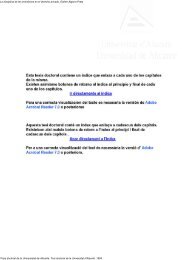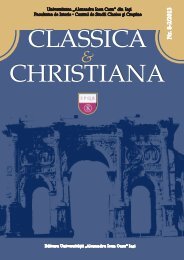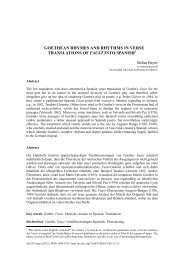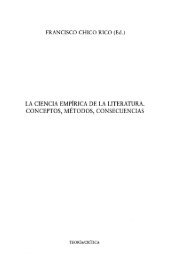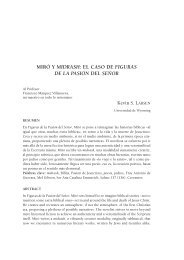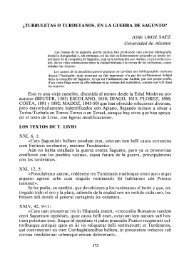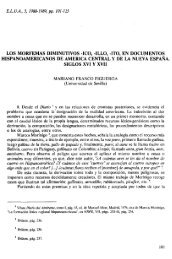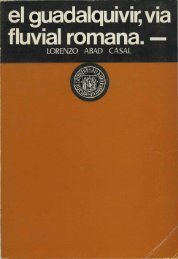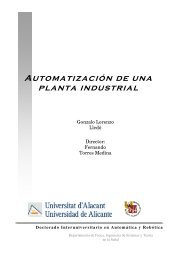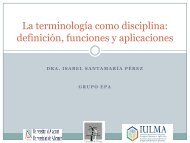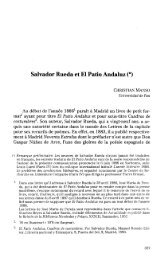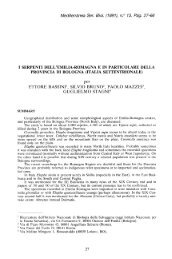ecological effects of marine protected areas empafish project ...
ecological effects of marine protected areas empafish project ...
ecological effects of marine protected areas empafish project ...
Create successful ePaper yourself
Turn your PDF publications into a flip-book with our unique Google optimized e-Paper software.
EMPAFISH Booklet no. 1 Ecological <strong>effects</strong> <strong>of</strong> Atlanto-Mediterranean MPAs in the EU<br />
short-term, the removal <strong>of</strong> macroalgal fronds (i.e. canopy reduction) caused<br />
evident changes in invertebrate and crypto-benthic fish densities although<br />
these indirect <strong>effects</strong> were species-specific (Milazzo et al., 2004).<br />
Fish feeding influenced the fish assemblages within the Ustica MPA, and<br />
significant spatio-temporal changes occurred (Milazzo et al. 2005). In<br />
particular, the saddled bream Oblada melanura noticeably increased its<br />
density in the impacted location as a result <strong>of</strong> fish feeding, although its<br />
average total length was unaffected. Moreover behavioural changes occurred,<br />
with twelve fish species, in the presence <strong>of</strong> tourists, abandoning their natural<br />
habitat and exhibiting a human positive behaviour (Milazzo et al. 2006). The<br />
non-natural aggregations <strong>of</strong> fishes around snorkelers, which evolve as a result<br />
<strong>of</strong> fish feeding by the public, have negative <strong>effects</strong> on local populations <strong>of</strong><br />
fishes that make up their prey (Milazzo et al. 2006).<br />
� Indirect <strong>effects</strong><br />
Some circumstantial evidence for fish-mediated trophic cascade <strong>effects</strong> in the<br />
Ustica Island MPA is given by different studies. There has been indirect<br />
concern <strong>of</strong> changing rocky bottom community state since the early 1980s.<br />
Dominance by canopy-forming brown algae as Cystoseira spp. and Dyctiota<br />
spp. was consistent in shallow rocky <strong>areas</strong> through 1980s (Giaccone et al.<br />
1985). In 1991 the effective institution <strong>of</strong> the MPA restricted the human<br />
exploitation <strong>of</strong> <strong>marine</strong> organisms (including sea urchin harvesting) all around<br />
the island. Some years later (i.e. from 1994-1997), canopy forming brown<br />
algae in shallow waters were still dominant at large scales (10 2 -10 3 m) (La<br />
Mesa & Vacchi 1999; Milazzo et al. 2000), but unstable in patches <strong>of</strong> coralline<br />
barrens at smaller spatial scale (10 0 -10 1 m) mainly boulders. Almost during<br />
that period, sea urchin populations <strong>of</strong> Paracentrotus lividus dramatically<br />
increased, although evidence <strong>of</strong> this is only qualitative. In 2001, a<br />
homogeneous coralline barren habitat took place all around the island coast<br />
from about 1.5 to 7-8 m depth (Cianciolo et al. 2005). The occurrence <strong>of</strong> the<br />
barren habitat seemed not to be related to fishing restrictions (La Mesa &<br />
Vacchi 1999; Palmeri 2004).<br />
In the island <strong>of</strong> Ustica, the barrens state appeared several years later the<br />
institution <strong>of</strong> the MPA and it seems started in the integral zone, where human<br />
access is forbidden. Several reasons may explain the presence <strong>of</strong> extensive<br />
coralline barrens along the shallow waters <strong>of</strong> the Ustica MPA, among them the<br />
scarce presence both inside than outside the MPA <strong>of</strong> high density <strong>of</strong> Diplodus<br />
spp. (Palmeri 2004), considered the most important sea urchin predators.<br />
Probably also the prohibition <strong>of</strong> sea urchin harvesting by humans has played<br />
an important role.<br />
70



